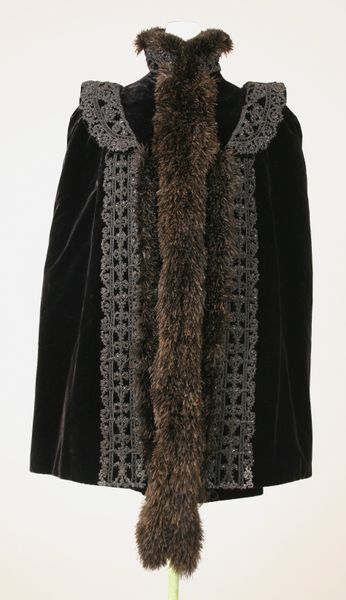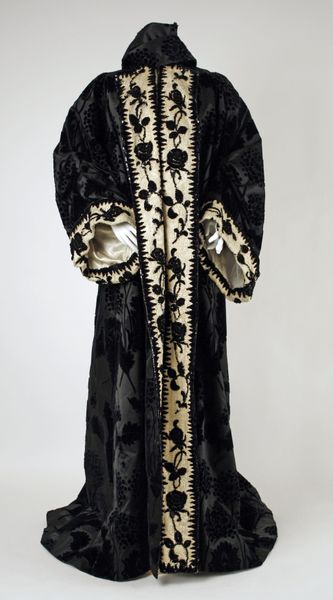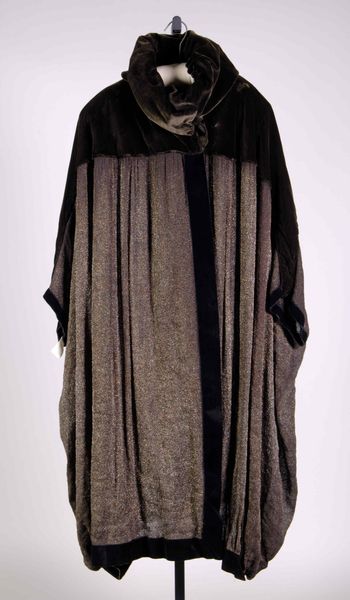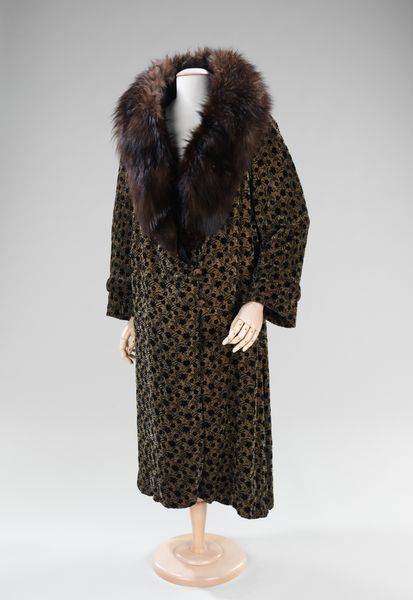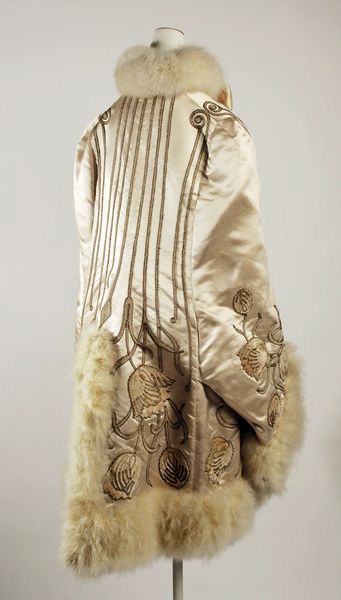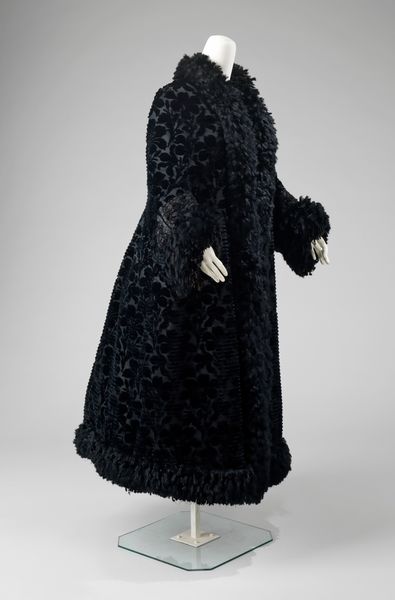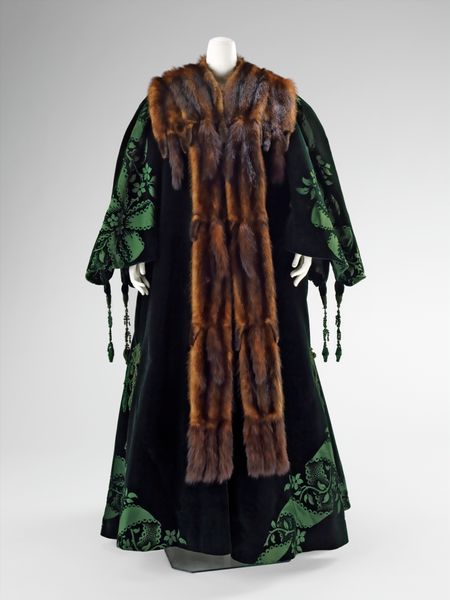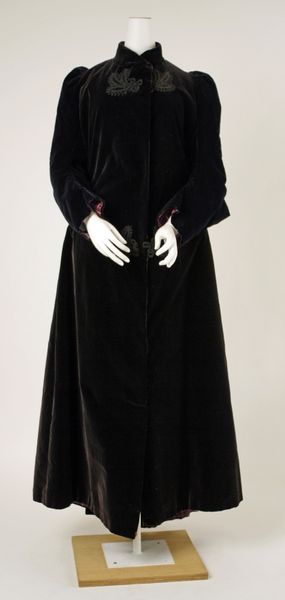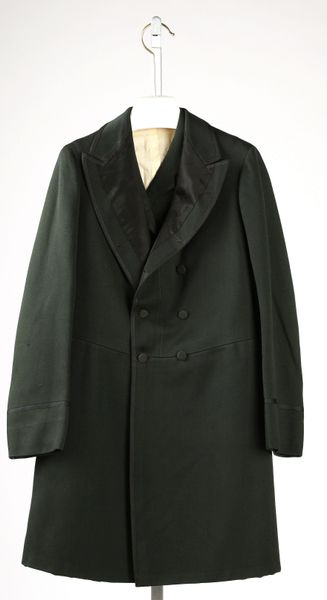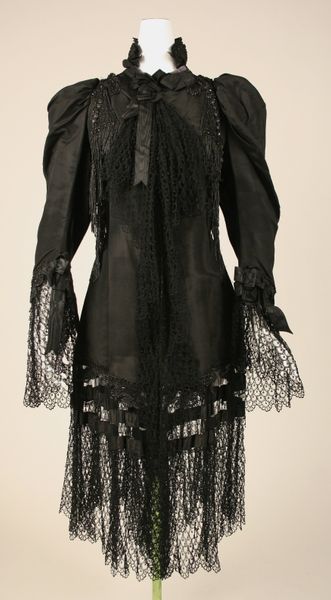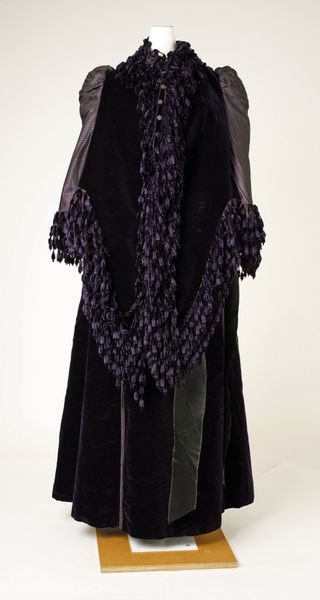
Copyright: Public Domain
Curator: The craftsmanship of this garment is breathtaking! Made around 1879-1880, it's called simply, "Cloak" and we believe the hand behind it belongs to Emile Pingat. It's quite the textural experience, isn’t it? The Met possesses it currently... Editor: Absolutely. I immediately get this heavy, theatrical vibe, like a piece for a dramatic exit or entrance. Dark romanticism, wouldn’t you say? The sheer amount of fringe seems like it's meant to deliberately announce every movement. Curator: Precisely! Imagine the rustling sound as someone glides across a room in this! Romantic, indeed. Think of a darkened opera house, gaslight shimmering on that fur...The mixed-media, the textile assemblage--it all screams "grand statement." Editor: And I find myself thinking about how garments, like this cloak, can function as potent signifiers. Beyond warmth and protection, this kind of garment practically shouts wealth and status. It reminds me of sumptuary laws. The symbolism feels almost archaic, a coded visual language. Curator: It's a fascinating point, considering the time period. While the French Revolution had passed by this time, fashion still held that symbolic weight you mentioned! It could whisper of political allegiance, hidden longings. The detail, the way light and shadow play on the textile, almost feels... conspiratorial. Editor: Exactly! You've captured what I'm groping at perfectly. Even the deep blacks evoke power, mystery. It's almost as if it holds the untold stories of those who wore it through history. Curator: Yes, like holding a story frozen in time, where the very texture whispers secrets to the observer... Editor: A tactile connection to our past, definitely resonating in contemporary discourse about memory and culture! I am glad for this dialogue.
Comments
No comments
Be the first to comment and join the conversation on the ultimate creative platform.
